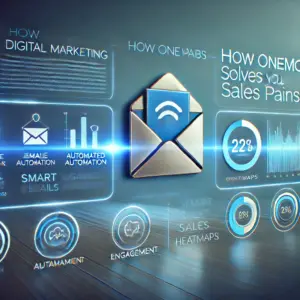Introduction to Microsite Examples
Microsites, often misunderstood as mere offshoots of a primary website, hold a strategic significance in the digital marketing ecosystem. Defined as independently branded pages or small clusters of pages that exist outside of a company’s primary domain and are designed with a singular focus, microsites serve a myriad of purposes ranging from promoting specific campaigns to targeting particular customer segments.
Their strategic value cannot be overstated. Microsites offer businesses the unique ability to tailor content, design, and user experience to match the specific goals of a campaign or product launch, without the constraints of the main website’s structure or theme. This flexibility enables marketers to create highly targeted and engaging content that can significantly boost conversion rates and enhance brand engagement.
Moreover, microsites allow for experimental creativity in marketing strategies. They can act as testing grounds for new ideas, layouts, and content strategies without risking the brand’s consistency or user experience on the main site. By tracking the performance and user engagement on these microsites, businesses can gather invaluable data and insights, which can be leveraged to inform broader marketing strategies and website design principles.
Showcasing Effective Microsite Examples
Following our introduction to the strategic value of microsites, let’s delve into some compelling examples that illustrate how they can be leveraged for various objectives. From interactive product launches to event-specific engagements, educational purposes, and brand storytelling, microsites offer a versatile platform for creative and targeted marketing strategies.
Interactive Product Launches
Interactive product launches through microsites provide a unique opportunity for brands to create a memorable first impression. These microsites often feature immersive experiences, such as 3D product views, interactive demos, and engaging narratives that guide visitors through the product’s features and benefits. Notably, tech giants and fashion labels have successfully utilized this approach to generate buzz and encourage pre-orders ahead of official releases. Such microsites not only highlight the product but also reinforce the brand’s innovative edge.
Event-specific Microsites for Engagement
Event-specific microsites serve as a centralized hub for all event-related information, facilitating enhanced attendee engagement. These platforms can include schedules, speaker bios, registration forms, and even live streaming of the event. They’re particularly effective for promoting interaction through social media integration and contests. For instance, music festivals and professional conferences often deploy microsites to keep attendees informed, engaged, and connected, both pre-event and post-event, thereby extending the lifecycle of the event engagement.
Educational Microsites for Awareness and Training
Educational microsites are a powerful tool for raising awareness and providing training on specific topics or causes. These microsites can host a variety of content formats, including videos, downloadable resources, interactive quizzes, and infographics to cater to different learning styles. They are widely used by non-profits, health organizations, and corporations for campaigns focused on public education or internal employee training. The key to their effectiveness lies in their ability to present complex information in an accessible and engaging manner.
Brand Storytelling through Thematic Microsites
Thematic microsites offer brands a canvas for storytelling that goes beyond traditional advertising, allowing for deeper emotional connections with their audience. These microsites often utilize multimedia elements to weave stories that resonate with visitors, whether it’s through a journey with the brand’s mascot, a historical retrospective, or a narrative highlighting the brand’s values and mission. This strategy not only captivates the audience but also strengthens brand loyalty and identity. Luxury brands, in particular, have mastered the art of using thematic microsites to elevate their storytelling and immerse users in their brand universe.
Each of these microsite examples showcases the potential to engage, educate, and connect with audiences in innovative ways. By tailoring the microsite to the specific goals of the campaign, brands can create memorable experiences that drive action and loyalty.
Creating Your Own Microsite
Following the exploration of effective microsite examples, it’s now time to delve into the nuts and bolts of creating your own microsite. Crafting a microsite that captivates and engages your audience requires attention to several key elements, selection of the right platform and tools, thoughtful design, and a strategic approach to measuring success.
Key Elements of a Successful Microsite
At the core of a successful microsite are a few fundamental elements:
- Clear Objective: Define a precise goal for your microsite. Whether it’s product promotion, event engagement, educational content, or brand storytelling, the objective should guide every aspect of your microsite.
- Targeted Content: Tailor your content to speak directly to your intended audience. Use engaging visuals and concise, impactful text to convey your message effectively.
- User-Friendly Design: Navigation should be intuitive, with a clear path for users to follow. A compelling design not only draws visitors in but also encourages them to explore further.
- Responsive Layout: With the prevalence of mobile devices, ensuring your microsite performs flawlessly across all platforms is non-negotiable.
Choosing the Right Platform and Tools
Selecting the appropriate platform and tools is critical for building a microsite that meets your needs. Consider platforms that offer flexibility in design and functionality. Tools such as OneMob can enhance your microsite’s engagement by integrating personalized videos, which can significantly increase outreach and prospect engagement. Additionally, leverage analytics tools from the start to track performance and optimize your microsite over time.
Design Tips for Engaging and User-Friendly Microsites
Design plays a pivotal role in the success of your microsite. Here are some tips to ensure your microsite is both engaging and user-friendly:
- Keep It Simple: Avoid clutter. A minimalist design can make a strong impact without overwhelming your audience.
- Consistent Branding: Ensure your microsite aligns with your brand’s look and feel. Consistency builds trust and reinforces brand recognition.
- Visual Hierarchy: Use size, color, and layout to guide visitors’ attention to the most important elements of your microsite.
- Interactive Elements: Incorporate interactive features such as quizzes, polls, or videos to increase engagement and keep visitors on your site longer.
Measuring Success: Metrics to Track Performance
Finally, understanding how to measure the success of your microsite is crucial. Focus on metrics that align with your microsite’s objectives. Key performance indicators might include:
- Traffic Volume: Total number of visitors and unique visits.
- Engagement Metrics: Time on site, pages per visit, and bounce rate.
- Conversion Rate: The percentage of visitors who take the desired action, be it signing up for a trial, downloading a resource, or making a purchase.
- SEO Ranking: Your microsite’s visibility in search engine results for relevant keywords.
By focusing on these key areas, you can create a microsite that not only serves your strategic objectives but also provides a valuable and engaging experience for your audience.
Microsite Best Practices
Following the creation of your microsite, leveraging best practices in SEO, integration, and learning from case studies can significantly enhance its performance and impact. Here’s how:
Integrating with Your Main Website and Social Media
Ensure your microsite doesn’t stand isolated. Linking it to your main website not only drives traffic but also strengthens the SEO performance through shared authority. Similarly, integrating social media sharing options can increase visibility and engagement, turning visitors into advocates for your content. Use social media to tell a cohesive story that aligns with your microsite’s goals, encouraging shares and interaction.
Case Studies: Lessons from Successful Microsites
Learning from successful microsites can provide valuable insights. For instance, Spotify’s “Year in Music” campaign microsite excelled by offering personalized user statistics, encouraging massive social media sharing due to its personalized and shareable content. Another example is HBO’s “Ascend the Wall” microsite, which utilized immersive VR technology to engage Game of Thrones fans, demonstrating the power of innovative technology in creating memorable microsite experiences. These case studies highlight the importance of creating content that resonates with your audience and leveraging the latest technology to enhance user engagement.
In conclusion, integrating effective SEO strategies, ensuring seamless integration with your main site and social media, and learning from the successes and innovative approaches of other microsites are key factors in achieving the desired impact and engagement from your microsite efforts.





